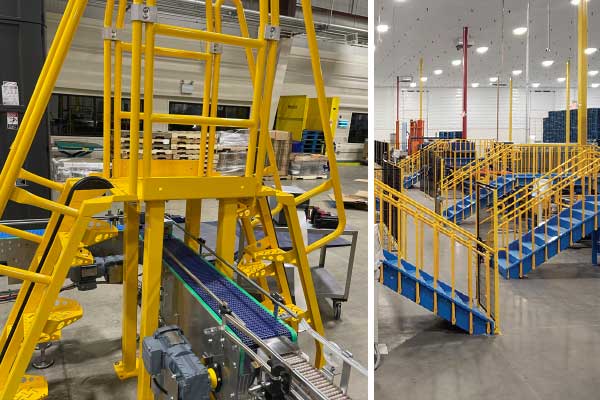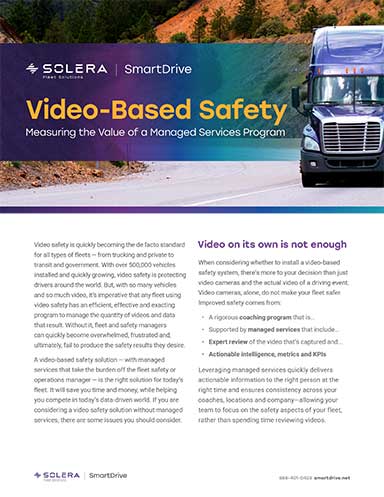Code-compliant stair designs increase safety, improve ergonomics
This article will help you to determine which code applies to your stair application and understand other factors that contribute to stair safety.
Providing code-compliant stairs is the first step to ensuring safe access in your facility. Additional measures of safety and improved ergonomic factors are achieved by limiting environmental, behavioral, and design factors that can contribute to the risk of using stairs. This article will help you to determine which code applies to your stair application and understand other factors that contribute to stair safety.
OSHA Stairs vs. IBC Stairs
Both OSHA (Occupational Safety and Health Administration) and IBC (international Building Code) issue standards for compliance so it’s important to understand which code applies to your application.
OSHA, which is part of the United States Department of Labor, sets and enforces standards related to working conditions. Its priority is to reduce the number of safety and health hazards at places of employment. OSHA-compliant, industrial stairs are intended for workplace areas that are not publicly accessible.
OSHA-compliant stairs are intended for use in facilities designated as employee workspaces, such as factories and manufacturing facilities. OSHA stairs can be used on both the interior and exterior of these locations to access equipment, platforms, mezzanines, pits, or other floors.
IBC, which is a model building code developed by the International Code Council, addresses safety and health concerns for public buildings. Its priority is to protect public health and safety. IBC-compliant stairs are intended for areas accessible to the general public and their design is based on building type and occupancy.
IBC standards apply to stairs accessible by the general public and focus on the safety of all people, including children and the elderly. IBC stairs are part of a building’s means of egress. There are four IBC standards that apply to stairs: Industrial Egress, Commercial Egress, Accessible Commercial Egress, and Commercial Residential Egress. IBC stairs that are located in areas required to be handicap accessible must also comply with ADA (Americans with Disabilities Act) Accessibility Standards.
Both OSHA and IBC provide design standards for every part of a standard stairway.
There are 6 general features of stairways and buildings that are addressed by the codes:
- Building Features
- General Stair Features
- Tread and Riser Features
- Handrail, Stair Rail, and Guardrail Features
- Toe Plate Features
- Stair Landing Features
A summary of these requirements can be found in our whitepaper on the topic.
Non-Standard Stairs
OSHA mandates that standard stairs be used to provide access from one walking-working surface to another when operations necessitate regular and routine travel between levels, including access to operating platforms for equipment.
According to OSHA, non-standard stairs, including alternating tread stairs, ship stairs, and spiral stairs can only be used only when the employer can demonstrate that it is not feasible to provide standard stairs. IBC allows the use of non-standard stairs as a means of egress only in very specific circumstances.
Below are OSHA’s definition of the non-standard stair types:
- Alternating Tread Stair - A type of stair consisting of a series of treads that usually are attached to a center support in an alternating manner such that users typically do not have both feet on the same level while using the stair
- Ship Stair - A stair that is equipped with treads, stair rails, and open risers, and has a slope that is between 50 and 70 degrees from the horizontal
- Spiral Stair - A series of treads attached to a vertical pole in a winding fashion, usually within a cylindrical space
- Ladders - Fixed, vertical ladders are classified separately from stairs; they are not considered to be non-standard stairs
Stair Design Safety Factors
Many aspects of stair design have an impact on safety including stair angles and tread depths. For example, steep-angle stairs require less floor space to install but also provide less usable tread depth to users. Missteps become increasingly more frequent as tread depth decreases below 12”. In addition, inadequate tread depth provides insufficient foot support and causes postural instabilities.
Stair tread design can also impact safety. Inconsistent dimensions of stair treads or risers, as well inappropriate combinations of tread depth and riser height can make steps awkward to navigate and lead to missteps. Slippery and rough treads, confusing color patterns on the tread, poor visibility of tread nosing and nosing strips that project above the tread can also contribute to accidents.
Additional design-induced risk factors include lack of a graspable, reachable handrail or the presence of a discontinuous handrail. The placement of one or two isolated steps can also cause concern if cues to their presence are not indicated.
Lapeyre Stair has over 40 years of experience designing and manufacturing safe-access solutions. All of our products undergo complete, structural analyses to ensure every stair we ship fully complies with all applicable codes and standards. Our stair design whitepaper can help you make informed decisions to confirm the stairs in your facility are code compliant and meet the highest standards of safety and ergonomics.













